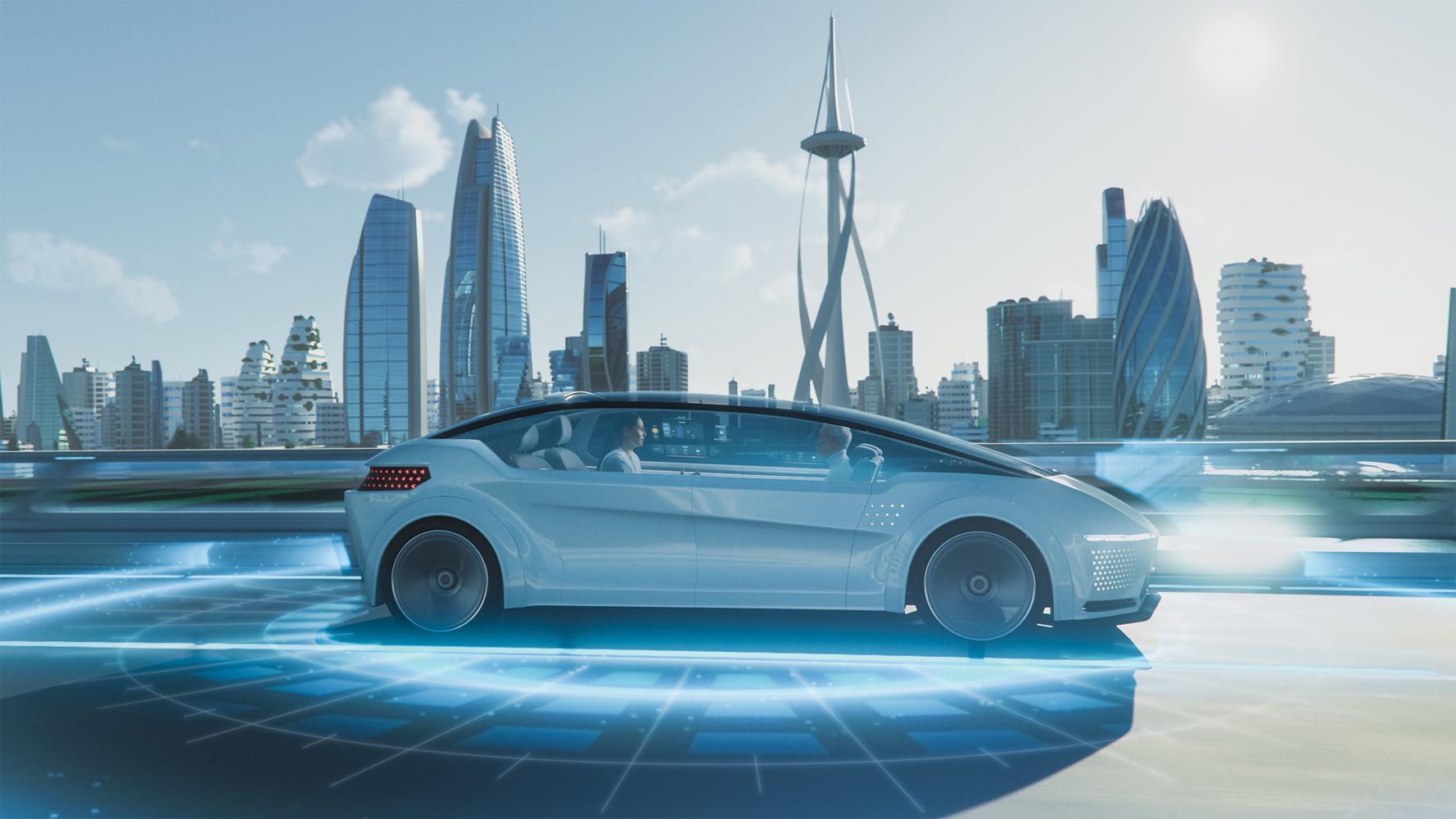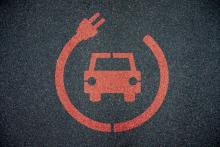
探讨汽车行业发展趋势
博世 GNSS 和惯性传感器工程部门副总裁 Mathias Reimann 与 u-blox 汽车应用营销总监 Stefania Sesia 博士
以传感、数据处理和无线通信为核心的�技术创新浪潮正在颠覆汽车行业。随着汽车变得越来越自动化,OEM、一级供应商及其供应商和服务提供商正在适应由机械和软件工程在同等程度上定义的新现实。博世的 Mathias Reimann 和 u-blox 的 Stefania Sesia 探讨了汽车行业发展趋势,及其已经对汽车制造商及其供应商产生了怎样的影响。
你们认为当今汽车行业的主要发展趋势是什么?

Stefania Sesia – 一种趋势是汽车变成了车轮上的软件平台。在未来,差异化因素将不再只是品牌、外观、机械和硬件,还包括可以嵌入其中的应用,以及在其生命周期内不断升级车辆并引入新功能的可能性。升级软件和相关功能将防止车辆过时,从而提高其价值。
其次,车辆中嵌入的功能日益复杂,正在推动车辆架构朝着更加集中化的方向发展。我们正在从基于纯功能的电气/电子架构转向基于域的分区,并最终转向基于高计算能力单元的更集中的电子控制架构。与此同时,车辆中将会嵌入越来越多的传感器,从而会导致在车辆中更广泛地使用短程通信以避免大量的布线,这在今天也被视为一个问题。

Mathias Reimann – 支持用户在行程中上线后,汽车本身及其技术也将上线,以在其生命周期内支持新的特性和功能。正如 Stefania 所提到的,持续的技术升级仅在软件友好型架构和可更新的平台下才有可能实现。一些 OEM 领先一步,用非凡概念彻底改变了行业,现在许多其他 OEM 也在效仿。作为一级供应商,我们博世在 OEM 向我们提出的许多要求中都看到了这一点,所以将其整合到我们的产品路线图中。
第二个主要趋势是推动在车内安装更多传感器。为什么呢?在过去几年里,我们大肆炒作一切都变得自动化,之后,我们在这次讨论中看到了一丝冷静。尽管如此,ADAS(高级驾驶辅助系统)和 AD(自动驾驶)系统正在征服越来越多的中级车市场,跨越三大细分市场。
对于第一个细分市场,即传统的私家车市场,第一步是从辅助驾驶转向 ADAS。换句话说,对于 SAE 2 级,举例来说,提供目前在美国和中国非常流行的免提功能。这是朝着更舒适的驾驶体验的方向迈进,但驾驶员仍然要掌控车辆。今年或明年,我们将在市场上看到 3 级功能,也就是首个真正的免提功能。对于私人拥有的乘用车来说,这将是一个循序渐进的方法。
第二个细分市场是共享出行,目标是 SAE 4 级甚至 5 级,届时,汽车能够自行开到修理厂并提供出租车或叫车服务。最后,第三个细分市场由商用车组成,不仅针对最后一公里,还针对长途驾驶,需要 4 级或 5 级自动驾驶。
这三个细分市场都需要自己的传感器设置,并结合可更新的服务。因此,传感器必须满足当今规范的要求,因为客户希望在汽车的整个生命周期内都能引入��新的功能。因此,对于我们传感器供应商、GNSS 制造商、Car-2-X 基础设施供应商和硬件供应商来说,这是一个有趣的时刻。
我们正在从基于纯功能的电气/电子架构转向基于域的分区,并最终转向基于高计算能力单元的更集中的电子控制架构。
Stefania Sesia,u-blox
S.S.– 与 ADAS 和 AD 的演进相关的另一个关于通信的趋势正在显现:引入 V2X 技术作为增强车辆局部感知的手段,基本上是安装一组对车辆已有传感器进行补充的传感器。与典型的传感器相比,此类传感器具有截然不同的需求,并在通信和整个端到端系统方面带来了新的挑战,可靠性、可信赖性和可用性方面的要求成为基本要求。
让我们继续讨论趋势话题,我预计具有更多 AD 功能的车辆将需要更多的车用信息娱乐系统内容来娱乐乘客,包括后座或前座增强现实、游戏和视频会议。这将对短程通信和远程通信提出更高的要求,旨在为后排和前排乘客提供独立的娱乐服务。
我看到的最后一个趋势是车辆的电动化。截至今天,电动车辆细分市场广泛使用短程通信,即在充电桩处使用蓝牙识别客户,并使用 Wi-Fi 进行车辆与充电桩之间的直接通信。电动车辆目前约占汽车市场份额的 5%,预计在未来十年内将迅速增长至约 50%。这意味着需要大量部署充电站和改进充电方法,以提供更轻松的终端用户体验。
M.R.– 电动化也是我们博世未来的主要成长型市场领域之一。整个技术设置是我们产品组合的一部分,因此我们正在从我们自己的电源 IC 半导体到完整系统的各个方面进行投资。你们可能已经注意到,在电机生产中,博世是不可或缺的一部分,因此就会明白,从一开始,这就一直是我们公司�的命脉。
了解最新动态
我们希望随时将最新动态告诉您。填写此表格以随时了解 u‑blox 的新想法和新兴技术。
这些趋势是全球性的,还是存在区域差异?
M.R. – 在 ADAS 和 AD 方面,我们清楚地看到了区域趋势。硅谷有一个创新中心,我们看到美国西海岸客户对 SAE 3 级和 4 级自动驾驶的大力推动,他们希望成为全球第一。我们还看到来自中国的大力推动,其目标是减少交通拥堵的时间。另一方面,我们看到的对 2 级自动驾驶的推动主要来自欧洲,旨在实现更舒适的驾驶体验。我们看到了欧洲针对 2021/2022 年度发布的第一个 3 级公告 – 我们生活在一个非常激动人心的时代!
互联服务也是如此。在欧洲,我们仍然没有很好的移动网络,而中国正在大力推动更高的连接速度和更快的云端解决方案,实现了出色的互联服务。这并不是说我们在欧洲看不到这些趋势,只是需要更多时间。
电动化也是我们博世未来的主要成长型市场领域之一。
Mathias Reimann,博世
S.S.– 我们看到的是,无论身在何处,OEM 都支持类似的应用,但架构和要求却大不相同,并且存在一些区域趋势。举例来说,关于为定位系统引入安全解决方案的几项讨论还正在进行中,包括 3 级 AD。对绝对安全的定位系统的需求并不代表 3 级 AD 市场的全部,而只是其中的一部分。特别是,在欧洲,我们看到对 GNSS 安全解决方案的需求正在增加。在中国,有关该情况的关注正在增多,但架构趋势还尚�不明确。然而,在美国,目前我们看不到对安全 GNSS 的明确需求,至少对乘用车而言是这样。
M.R.– 您是对的。另一方面,我们看到了区域偏好,并且可以区分城市和高速公路用例。举例来说,对于美国的传统高速公路用例,卡车自动化是安全和精确 GNSS 的明确驱动因素,而在中国,这种讨论始终与北斗卫星系统集成相关。在城市用例中,重点更多地放在视频技术和相对定位技术上。然而,对于高速公路自动化,我们在全球范围内看到了对安全和精确 GNSS 的技术需求。
回到 GNSS 与特征定位,在农村用例中,我们看到了基于摄像头和雷达的解决方案的主导地位。客户经常问我们:“为什么你们不能用基于摄像头的特征定位来解决定位问题?”我们看到两者之间有很多互补性。举例来说,在美国或德国北部的无特征高速公路上,特别是在恶劣天气条件下,我们很难使用雷达和视频识别特征。另一方面,在某些情况下,GNSS 信号可能会丢失,包括在高层建筑和多路径场景中。我们坚信,GNSS 和特征定位是互补技术,两者都是 2 级及以上系统中必不可少的。
你们是否能够预见到车辆架构的革命性变化?如果是这样,对 OEM 和各级供应商有何影响?
M.R.– 1 月 1 日,博世成立了一个名为 Cross-Domain Computing Solutions(跨域计算解决方案)的新业务部门,我和我的团队都属于该部门,其中的人员也都抽调自其他几个业务部门,其目标是开发所需的数据管理概念、云服务和灵活的硬件平台,以实现新功能。这是倾向于集中式架构的一个明显的内部迹象,我们希望以专业和激励的方式满足客户的需求。
在具有分布在许多不同 ECU 上的智能系统的架构上,现场维护和��升级功能是很困难的,尤其是存在多个供应商的情况下,每个供应商在各自的 ECU 上都有自己的软件架构。这就是为什么我们能够清楚地看到将汽车分成多个区域的趋势,每个区域都有一个单独的区域 ECU 以及车辆中央计算机,其背后有非常清晰和标准化的软件和系统架构。当然,还有无线更新软件的可能性。
S.S.– Mathias,我完全同意您的说法。正如我们前面提到的,存在一种集中化的趋势,但是每个汽车 OEM 将有其自己的策略,以实现更精简和更高效的架构,能够在车辆使用寿命内增加越来越多的功能,从而在复杂性方面进行扩展。如今,典型的架构基于三台车辆主计算机:一台用于车联网、一台用于车用信息娱乐系统、一台用于 ADAS 以及一些较小的功能。我认为,汽车 OEM 将更难完全打破传统的架构并从零开始:也许此方式更适合初次进入该垂直领域的新入者。我们期望的是,肯定会有一个逐步的方法。作为一级和二级供应商,我们必须能够灵活调整自己的解决方案,以适应客户可能具有的不断发展的架构、操作系统、要求和限制。
当然,u-blox 完全有能力通过我们现有的灵活产品方案实现这一目标。特别是在 GNSS 领域,u-blox M8 GNSS 接收机系列可提供单频段标准精度 GNSS 芯片组和模块,u-blox F9 系列可提供高精度 GNSS 技术。而且,由于我们最近收购了 Sapcorda,因此我们的高精度校正服务可提供同等级中最佳的性能,并附带绝大多数必要的主机库和安全措施。而且,在功能安全性和完好性解决方案方面,我们还进行了相当大的投资。
除此之外,我们还通过短程通信解决方案(Wi-Fi 和蓝牙)解决了不断变化的环境带来的影响,从而密切关注每种技术的演变。举例来说,通过引入汽车级 Wi-Fi 6,我们的 JODY-W3 模块系列可为 2.4 和 5 GHz 频段提供并发支持,在未来还可支持欧盟委员会和 FCC 最近发布的 6 GHz 频段。最后,请不要忘记,我们的一些蜂窝通信产品还可用于汽车领域。
适用于汽车的主要无线使能技术都有什么?在提供级别越来越高的辅助和自动化功能方面,GNSS 定位将发挥什么作用?
S.S. – 无线技术与 5G 是密不可分的。毫无疑问,5G 将与 V2X 一起,通过基于云或边缘的平台分享越来越多的意识数据、警报和传感器数据来提供大量服务以增加最终用户的安全性或便利性。Mathias 已经提到其中的一些:共享出行、最后一公里配送、叫车服务 – 最终,未来必然会出现通过可靠和高容量的通信链路实现的社会趋势。
无线技术与 5G 是密不可分的。毫无疑问,5G 将与 V2X 一起,提供大量服务以增加最终用户的安全性或便利性。
Stefania Sesia,u-blox
在 Wi-Fi 方面,除了并发和独立的前座和后座车用信息娱乐系统外,目前还有几种应用需要更高的数据传输速率和并行数据流。举例来说,Wi-Fi Fixer 使用 FDMA 和多用户 MIMO 以多个频率与多个并行设备进行多路复用通信,每个设备的数据传输速率要求都不同,从而支持更灵活地为同一车辆中的多个用户提供服务。
此外,还有其他应用。我们已经提到了电动车辆充电,但还有车辆免钥匙进入功能,汽车 OEM 越来越多地提供该功能。如今,蓝牙技术用于使用基于信号强度的定位方法来检测驾驶员的存在。利用蓝牙 5.1 的增强功能,该系统将使用到达角类型的检测来打开车辆并让驾驶员进入。针对免钥匙进入等汽车用例中新兴的超宽带技术,Car Connectivity Consortium® (CCC)(全球车联联盟)中也��进行了一些讨论。这也是一项受客户需求启发的技术。
在定位方面,GNSS 技术不断发展。该技术在车辆中存在已久,用于多个应用,包括 eCall、增强现实、导航、AD 地理围栏以及车辆的纵向和横向控制。虽然初始用例不一定要求非常精确的定位,米级精度也足够,但地理围栏和自动驾驶等应用需要车道级定位、一定程度的完好性以及与 ISO 26262 和 ISO 21448 功能安全性和 SOTIF(预期功能安全性)标准相兼容。根据用例,主要的 KPI 是鲁棒性、数据可信赖性、完好性、抵御网络攻击的适应能力、广泛的可用性和高精度。RTK 或 PPP-RTK 等校正服务将可实现的精度提升至分米级,因此变得越来越重要。
We would like to keep you informed.
Fill out this form to stay up to date with new ideas and emerging technology from u‑blox.
Are these trends global, or do you see regional differences?
M.R. – We clearly see regional trends when it comes to ADAS and AD. There is an innovation hub in Silicon Valley, and we see a very strong push for SAE Levels 3 and 4 from our US West Coast customers, who want to be the first worldwide. We also see a strong push from China, where the goal is to save time in traffic jams. On the other hand, the push we see for Level 2, coming primarily from Europe, aims at making driving more comfortable. And we see the first Level 3 announcements in Europe for 2021/22 – really exciting times we’re living in!
The same goes for connected services. We still don’t have a very good mobile network here in Europe, whereas China, where there is a strong push for higher connection speeds and faster cloud-based solutions, is very well connected. It’s not that we don’t see these trends in Europe, it will just take a bit more time.
The electrification trend is also one of the major future growth market fields for us at Bosch.
Mathias Reimann, Bosch
S.S. – What we see is that OEMs, regardless of where they are, support similar applications but with quite different architectures and requirements, and there are some regional trends. There are, for instance, several ongoing discussions about the introduction of a safe solution for the positioning system, e.g., for AD Level 3. The need for a safe absolute positioning system does not represent 100 percent of the AD Level 3 market, but only a portion of it. In particular, we see in Europe that the demand for safe solutions for GNSS is increasing. In China interest is growing, but the architecture trends are not yet very clear. However, for the time being we don't see such clear demand for safe GNSS in the US, at least for passenger cars.
M.R. – You’re right. On the other hand, we see a regional bias and can distinguish between urban and highway use cases. For the classic highway use case in the US, for example, truck automation is a clear driver for safe and precise GNSS, whereas in China, this discussion is always linked to BeiDou satellite system integration. In urban use cases, the focus is more on video-based and relative localization technologies. However, for automation on highways, we see a technological necessity for safe and precise GNSS worldwide.
Coming back to GNSS versus feature localization, in rural use cases, we see the dominance of camera- and radar-based solutions. Customers often ask us: "Why can't we solve the localization problem with camera-based feature localization?" We see a lot of complementarity between the two. On featureless highways in the US or Northern Germany, for example, particularly in poor weather conditions, it is difficult for radar and video to recognize features. On the other hand, there are situations where GNSS signals can be lost, such as among high buildings and in multi-path scenarios. Our strong belief is that GNSS and feature localization are complementary technologies and will both be needed in Level 2 and above systems.
Do you foresee a revolutionary change in the vehicles’ architecture? If so, what are the consequences for OEMs and the various Tiers?
M.R. – On January 1, Bosch founded a new business unit called Cross-Domain Computing Solutions, which my team and I belong to, drawing on people from several other business units to develop the required data management concepts, cloud services, and a flexible hardware platform to enable new features. This is one clear internal sign of the trend towards a centralized architecture and our desire to address demand from our customers in a professional and incentivized manner.
Maintaining and upgrading features in the field on an architecture with intelligence distributed across many different ECUs is difficult, in particular with several suppliers, each with their own software architectures on their respective ECUs. That’s why we clearly see a trend to distribute the car into zones, each with an individual zone ECU, and central vehicle computers with a very clear and standardized software and system architecture behind them. And, of course, the possibility to update the software over the air.
S.S. – I completely agree, Mathias. As we mentioned earlier, there is a trend towards centralization, but each car OEM will have its own strategy to achieve a leaner and more efficient architecture capable of scaling in terms of complexity with more and more functionalities added during the vehicle’s lifetime. Today, typical architectures are based on three main vehicle computers: one for telematics, one for infotainment, and one for ADAS, plus some smaller ones. I think it will be harder for car OEMs to completely break with the legacy architecture and start from scratch; probably this will be easier for newcomers entering into these verticals. What we expect is that there will certainly be a stepwise approach. As Tier 1 and 2 suppliers, it will be important to be flexible and adjust our solutions to evolving architectures, operating systems, requirements, and constraints the customers might have.
Of course, u-blox is well positioned to achieve this with our existing, flexible offering. In particular in the GNSS space, with chipsets and modules for single-band standard precision GNSS offered by the u-blox M8 GNSS receiver family, with high precision GNSS technology offered by the u-blox F9 family, and, recently, thanks to the acquisition of Sapcorda, with our high-precision correction services that deliver best-in-class performance with all the necessary host libraries and security measures. And we have also invested a considerable amount into functional safety and integrity solutions.
On top of that, we also address evolving environments with our short-range communication solutions – Wi-Fi and Bluetooth – which closely follow the evolution of each technology. For example, with the introduction of automotive - grade Wi-Fi 6, offered by our JODY-W3 module family with concurrent support for the 2.4 and 5 GHz bands and, in the future, for the 6 GHz band that was recently released by the European Commission and the FCC. Finally, let’s not forget that some of our cellular offerings can be used in the automotive domain.
What are the major enabling wireless technologies for cars? And what role will GNSS localization play in delivering increasingly high levels of assistance and automation?
S.S. –You can’t talk about wireless technology without talking about 5G. Together with V2X, 5G will no doubt bring the possibility to share more and more awareness data, alerts, and sensor data with cloud- or edge-based platforms to enable a huge amount of services to increase safety or convenience for the end user. Mathias already mentioned some of them: shared mobility, last mile deliveries, ride hailing services – ultimately, societal trends that are bound to happen in the future enabled by a reliable and higher capacity communication link.
You can’t talk about wireless technology without talking about 5G. Together with V2X, 5G will no doubt enable a huge amount of services to increase safety or convenience for the end user.
Stefania Sesia, u-blox
When it comes to Wi-Fi, there are several applications today requiring higher data rates and parallel data streams in addition to concurrent and independent front- and rear-seat infotainment. Wi-Fi Fixer, for example, uses FDMA and multi-user MIMO to multiplex, in frequency, communications to several parallel devices, each with different data rate requirements. This allows for much more flexibility to serve several users in the same vehicle.
And there are other applications as well. We already mentioned EV charging, but there is also keyless entry into the vehicle, a use case that car OEMs are increasingly offering. Today Bluetooth technology is used to detect the presence of the driver using a positioning method based on signal strength. Leveraging enhancements to Bluetooth 5.1, it will use an angle-of-arrival type of detection to open the vehicle and let the driver in. There are also some discussions in the Car Connectivity Consortium® (CCC) in which ultra-wide band technology is emerging for automotive use cases such as keyless entry. This is also a technology inspired by customer needs.
When it comes to positioning, GNSS technology continues to evolve. It is already highly present in the vehicle for several applications, such as eCall, augmented reality, navigation, geofencing for AD, and longitudinal and lateral control of the vehicle. While initial use cases do not necessarily require very precise positioning and meter-level accuracy is sufficient, applications such as geofencing and autonomous driving require lane-accurate positioning, a certain level of integrity, and compatibility with the ISO 26262 and ISO 21448 standards for functional safety and SOTIF (safety of the intended functionality). Depending on the use case, the main KPIs are robustness, data trustability, integrity, resilience against cyber-attacks, broad availability, and high accuracy. Correction services such as RTK or PPP-RTK that bring down achievable accuracies to the decimeter-level are gaining in importance.

关于这一点,u-blox 正在投入大量资金,旨在开发在控制复杂性的同时实现极低的完好性风险的方法。我们正在监控技术趋势和演变的方向,特别是各类高要求用例的客户需求。
我们坚信,GNSS 和特征定位是互补技术,两者都是 2 级及以上系统中必不可少的。
Mathias Reimann,博世
M.R.- 让我添加一个很好的示例。自 1995 年以来,博世一直从事 IMU(惯性测量单元)业务,目前我们正在从事从微机械、ASIC 设计和生产到系统与车辆集成等多领域业务。即使在这么长时间之后,我们仍有很大的创新潜力,比如我们的超精密 IMU MMP2,该装置可用于高度自动化驾驶和安全停车操作。在这种背景下,五年前,博世的一个团队萌生了将我们的 IMU 知识与高精度 GNSS 结合到一起的想法。在与我们的自动驾驶部门同事进行了一些初步探讨后,其对车道级精度和安全定位的需求变得清晰起来。Stefania 提到了对地理围栏的需求,但我想说,其重要性不止于此。对于功能开发人员,精确的定位可确保您在所需的 ODD(运行设计域)中运行。为实现这种安全定位,将 IMU 与高精度和安全 GNSS 结合在一起的需求就应运而生。这就是车辆运动和位置传感器 (VMPS) 的产品理念获得支持的原因。乍一看似乎不可能完成的任务现在变得现实。随着 VMPS 系列的推出,博世将在市场上推出首个 ASIL-B 级 GNSS 系统。我们的客户正在使用内置 u-blox 技术的 VMPS 作为几个创新用例的平台,这甚至是我们几年前没有预见到的。
现在,如果我们展望未来,那就是 Stefania 提到的网络安全。对于 GNSS 而言,这意味着反欺骗和抗干扰算法将在未来几年中变得更加重要,对于我们的目标市场而言,可扩展性和灵活性也将越来越重要。对于中国而言,北斗卫星系统将是焦点,L1 和 L5 频段将是进入下一个时代的重要一步,Galileo 认证也是如此。有许多新的挑战即将到来,我们期待着在未来几年继续与 u-blox 合作。

随着汽车变得越来越计算机化,它们也在产生大量数据。我们应该如何充分利用这些数据?
S.S. – 在欧洲,除了其他方面,ITS 指令也对数据进行监管。它促进了车辆与云端之间越来越多的数据交换的可能性,从而刺激新的车辆服务的开发。我的理解是,各个生态系统仍在努力解决数据所有权问题、开发可行的商业模式,等等。我想说的是,产生大量数据的情况即将出现,但其速度与最初的预期不同。我认为汽车 OEM 应该改变其对数据的看法,因为数据可能会成为大部分生态系统的宝贵收入来源�,并将真正地为终端用户增值。
M.R.– 是的,大数据很有用,但让我们明确一点,我们不能简单地将从车辆内置传感器传出的所有原始数据都推送入云中。首先我们需要使用智能方式压缩该数据,然后仅提取相关内容。因此,博世正在大力投资用于数据管理的人工智能算法,该算法可以在将数据上传到云端之前从数据流中提取相关内容。在这方面,当您想到:“我需要更多细节”或“我需要更多地挖掘那里的原始数据...”时,能够更新筛选器非常重要。
管理数据是一件复杂的事情,因为它跨越多个物理接口和法律实体,因此负责任地使用人们的个人数据是博世的首要任务。这包括关于存储和处理哪些数据以及出于何种目的的透明度。
让我们快进二十年。你们个人认为 2041 年的汽车会是什么样子的?
M.R. – 由于我从事 ADAS 和 AD 业务,所以对我而言,2041 年的汽车是完全自动化的,举例来说,当车辆载我前往目的地时,我可以阅读 NZZ 报纸。但我相信,我们也会看到更多的共享车辆在四处行驶。对于长途,我非常喜欢高铁,比如日本的新干线,或者瑞士的圣哥达基线隧道项目。
S.S.– 2041 年是 20 年后,所以 Mathias 刚才说的情况肯定会出现:共享出行和完全自动驾驶的汽车。我认为该情况会逐步地出现,但必定会发生。我希望看到的是,我们在地面上和太空中都能够自由地出行,因为这将大幅提高运输速度。当然,这也存在一些问题,很多都与法规以及如何充分利用这种完全自主的飞行物体有关。但是,能够阅读报纸并更快地到达目的地,这绝对是件好事。让我们拭目以待!
了解最新动态
我们希望随时将最新动态告诉您。填写此表格以随时了解 u‑blox 的新想法和新兴技术。
We would like to keep you informed.
Fill out this form to stay up to date with new ideas and emerging technology from u‑blox.



